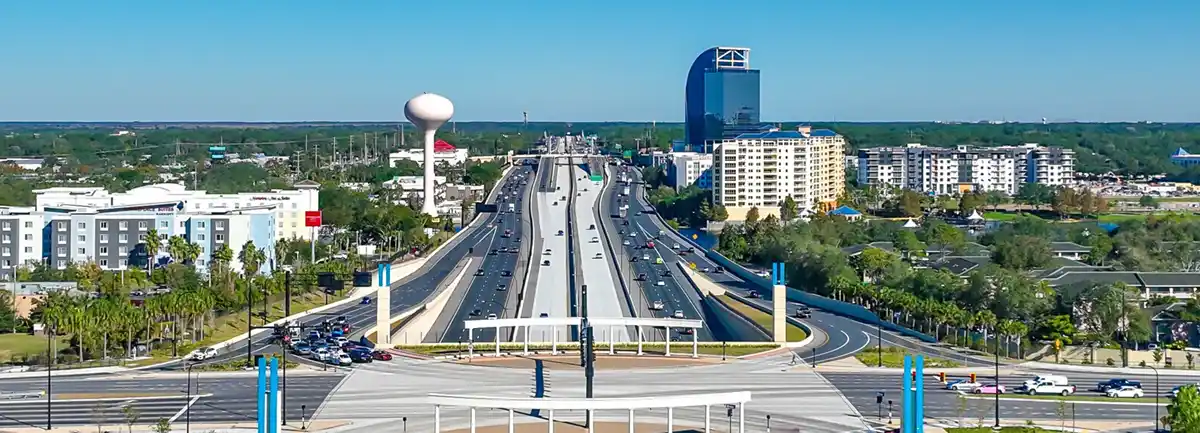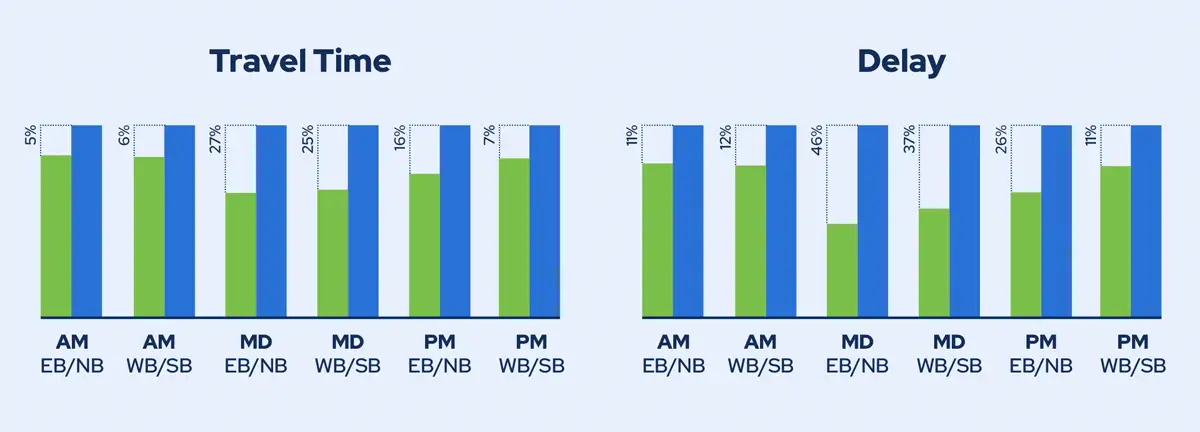Overview
State Road 436—locally known as Altamonte Drive—runs through the core of Seminole County’s daily life. Stretching 1.7 miles between Westmonte Drive and Maitland Avenue, this six-lane corridor carries over 59,600 vehicles each day and links key residential centers and commercial hubs.

But with twelve traffic signals packed into a short span, the corridor has become a congestion hotspot. Originally built to support regional connectivity, it now struggles under heavy demand, resulting in gridlocks, delays, and safety risks.
Problem: A Corridor Out of Sync
Congestion was just the tip of the iceberg. A county-led study found more than 1,100 pedestrian crosswalk calls in a single 24-hour period. These interruptions repeatedly broke signal coordination, throwing off timing plans and leading to cascading delays across intersections.
With such a high volume of foot traffic, vehicles were frequently forced to stop mid-cycle, disrupting flow and increasing travel times. Drivers faced unpredictable delays, while first responders struggled to navigate traffic. The result was a growing concern for both public safety and reliable emergency access.
Solution: The Smart Signal Upgrade
To restore balance and control, Seminole County implemented SynchroGreen®—an adaptive signal control system from Cubic’s Trafficware®. Designed to respond in real-time, SynchroGreen monitored vehicle and pedestrian flow across all twelve intersections and adjusted traffic signal timing dynamically based on actual conditions.
Real-Time Coordination, No Manual Tweaks
By continuously interfacing with intersection controllers, SynchroGreen helped maintain optimal flow throughout the corridor. The system balanced pedestrian crosswalk calls with vehicle volumes which reduced the ripple effect caused by frequent stops and surges. Most importantly, emergency vehicles were once again able to move freely, with fewer delays and greater predictability.
The technology also eased the burden on traffic operations teams by eliminating the need for manual adjustments. Intersections stayed in sync without human intervention, creating a smoother, more automated approach to traffic flow optimization.
Key Results

- 59,600 vehicles served daily
- 27% reduction in corridor travel time
- 46% reduction in arterial delay
- Improved emergency vehicle access
- Smart pedestrian integration without manual signal overrides
Conclusion
By deploying adaptive signal technology on one of its busiest corridors, Seminole County turned an unpredictable stretch of SR 436 into a smart, safe, and fast route for everyone—on foot, behind the wheel, or en route to emergency response.
With real-time adjustments and seamless coordination, this urban mobility solution demonstrates how targeted investment in intelligent traffic systems can create tangible, measurable results in high-pressure environments.
As Florida continues to grow, smart corridors like this one offer a clear model for communities aiming to reduce delays, enhance safety, and improve daily travel for residents and responders alike.
59K
Average Daily Travelers
12
Signalized Intersections
46%
Reduced Vehicle Delay